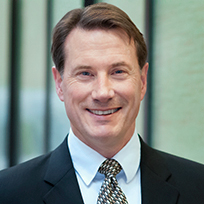Why the Fed Should Create a Standing Repo Facility
The Federal Open Market Committee (FOMC) is locking down its long-run monetary policy implementation framework. We know it will consist of a floor regime characterized by an ample supply of reserve balances. We argue below that the FOMC should include a standing repo facility as a part of this framework.
Ample Reserves
Ample reserves in the present context means the minimum level of reserves necessary to permit the efficient and effective conduct of monetary policy through the use of the Federal Reserve’s administered rates, without the active management of the supply of reserves.This definition follows from the FOMC’s 2014 Policy Normalization Principles and Plans (PDF) and its January 2019 Statement Regarding Monetary Policy Implementation and Balance Sheet Normalization Market participants are projecting ample reserves in the $1 trillion range—a level much higher than their precrisis average of approximately $20 billion. What could plausibly account for a fiftyfold increase in the necessary supply of reserves? Is the FOMC really doing all it can to minimize the necessary level of reserves in line with its 2014 Policy Normalization Principles and Plans?
Reserves as High-Quality Liquid Assets
Many commentators have pointed to post-2008 Basel III and Dodd-Frank regulations as having generated a large regulatory demand for high-quality liquid assets (HQLA), which include reserves. At first glance this explanation may seem unsatisfactory because HQLA also includes, among other things, U.S. Treasury securities.
Why should banks prefer reserves to higher-yielding Treasuries? One explanation is that Treasuries are not really cash equivalent if funds are needed immediately. In particular, for resolution planning purposes, banks may worry about the market value they would receive in the sale of or agreement to repurchase their securities in an individual stress scenario.This is presumably less of a concern in a collective stress scenario, in which “flight to safety” concerns would likely cause Treasuries to trade at a premium.
Consistent with this possibility, Federal Reserve Vice Chair for Supervision Randal Quarles noted, “Occasionally we hear that banks feel they are under supervisory pressure to satisfy their [high-quality liquid assets] with reserves rather than Treasury securities.”
To quantify this liquidity consideration, a recent post on the Federal Reserve Bank of New York’s Liberty Street Economics blog suggests that the eight domestic Large Institution Supervision Coordinating Committee’s banks collectively may want to hold $784 billion in precautionary reserves to cover their immediate liquidity needs in times of stress.
Converting Treasuries to Reserves through a Standing Repo Facility
These banks would presumably not want or need $784 billion in reserves if higher-yielding Treasuries could be liquidated at a modest discount on a reliable basis in times of stress. The Fed could easily incentivize banks to reduce their demand for reserves Our proposal is consistent with a remark made in the November 2018 FOMC minutes that mentions the possibility of adopting strategies that provide incentives for banks to reduce their demand for reserves. by operating a standing overnight repurchase (repo) facility that would permit banks to convert Treasuries to reserves on demand at an administered rate.We emphasize a standing facility because discretionary repo transactions were a normal part of the Fed’s open market operations prior to 2008. That is, we are not advocating practices that would be unfamiliar to the Fed. This administered rate could be set a bit above market rates—perhaps several basis points above the top of the federal funds target range—so that the facility is not used every day, but only periodically when a bank needs liquidity or when market repo rates are elevated.
With this facility in place, banks should feel comfortable holding Treasuries to help accommodate stress scenarios instead of reserves. The demand for reserves would decline substantially as a result. Ample reserves—and therefore the size of the Fed’s balance sheet—could in fact be much closer to their historical levels.
Additional Reasons for a Standing Repo Facility
Lending to Banks in Good Standing
There are several other reasons why introducing a standing repo facility makes sense. First, as discussed here, it is a way for the Fed to lend cash to banks that are in good standing and have high-quality Treasury securities as collateral but may find themselves short of cash. Importantly, this facility would not suffer from stigma problems that make the discount window an ineffective tool in these circumstances.
Complementing Overnight Reverse Repo Facility
Second, the facility should be thought of as a complement to the existing overnight reverse repo facility, which sees take-up vary with financial market conditions. Together, these two facilities would create the standard deposit and lending tools used in typical floor-operating regimes, such as at the European Central Bank.
Eliminating Need to Estimate Ample Reserves Level
Third, the repo facility would eliminate the need, ex ante, to make a judgment about the level of reserves likely to be ample. The interest rate ceiling established by the repo facility implies that the Fed can retain interest rate control independent of any shock to reserve demand or to the Fed’s nonreserve liabilities. The possibility of a repo facility was mentioned in the December 2018 FOMC minutes: “However, reducing reserves to a point very close to the level at which the reserve demand curve begins to slope upward could lead to a significant increase in the volatility in short-term interest rates and require frequent sizable open market operations or new ceiling facilities to maintain effective interest rate control.”
As reserves drain from the system, the point at which they become scarce would be demonstrated by a market signal: The federal funds rate and other money market rates would move up relative to the target range.
At this point, banks would start to use the repo facility, which would automatically inject reserves into the system and prevent rates from rising any further. That is, the facility would ensure there were ample reserves in the banking system and preserve interest rate control, while at the same time allowing the Fed to safely discover the lower end of “ample.”
Minimizing Payment of Interest on Reserves
Finally, apart from being consistent with the 2014 Policy Normalization Principles and Plans, a repo facility would minimize the politically bad optics of the Fed paying interest on reserves (of which a large share goes to foreign banks). It seems both wise and proper to let the Treasury directly bear the interest expense associated with the regulatory demand for HQLA.
Conclusion
Even though balance sheet normalization is well underway, we think it is never too late to introduce a repo facility. The FOMC would learn over time whether the facility is working to reduce the demand for reserves.
The FOMC could do so, for example, by permitting reserves to run off organically with the growth of currency in circulation while remaining confident that interest rate control would be maintained through the repo facility.
Notes and References
1 This definition follows from the FOMC’s 2014 Policy Normalization Principles and Plans (PDF) and its January 2019 Statement Regarding Monetary Policy Implementation and Balance Sheet Normalization.
2 This is presumably less of a concern in a collective stress scenario, in which “flight to safety” concerns would likely cause Treasuries to trade at a premium.
3 Our proposal is consistent with a remark made in the November 2018 FOMC minutes that mentions the possibility of adopting strategies that provide incentives for banks to reduce their demand for reserves.
4 We emphasize a standing facility because discretionary repo transactions were a normal part of the Fed’s open market operations prior to 2008. That is, we are not advocating practices that would be unfamiliar to the Fed.
5 The possibility of a repo facility was mentioned in the December 2018 FOMC minutes: “However, reducing reserves to a point very close to the level at which the reserve demand curve begins to slope upward could lead to a significant increase in the volatility in short-term interest rates and require frequent sizable open market operations or new ceiling facilities to maintain effective interest rate control.”
Additional Resources
- On the Economy: Banks’ Demand for Reserves in the Face of Liquidity Regulations
- On the Economy: Why Are Banks Regulated?
- On the Economy: Bank Supervision and the Central Bank: An Integrated Mission
This blog offers commentary, analysis and data from our economists and experts. Views expressed are not necessarily those of the St. Louis Fed or Federal Reserve System.
Email Us
All other blog-related questions




